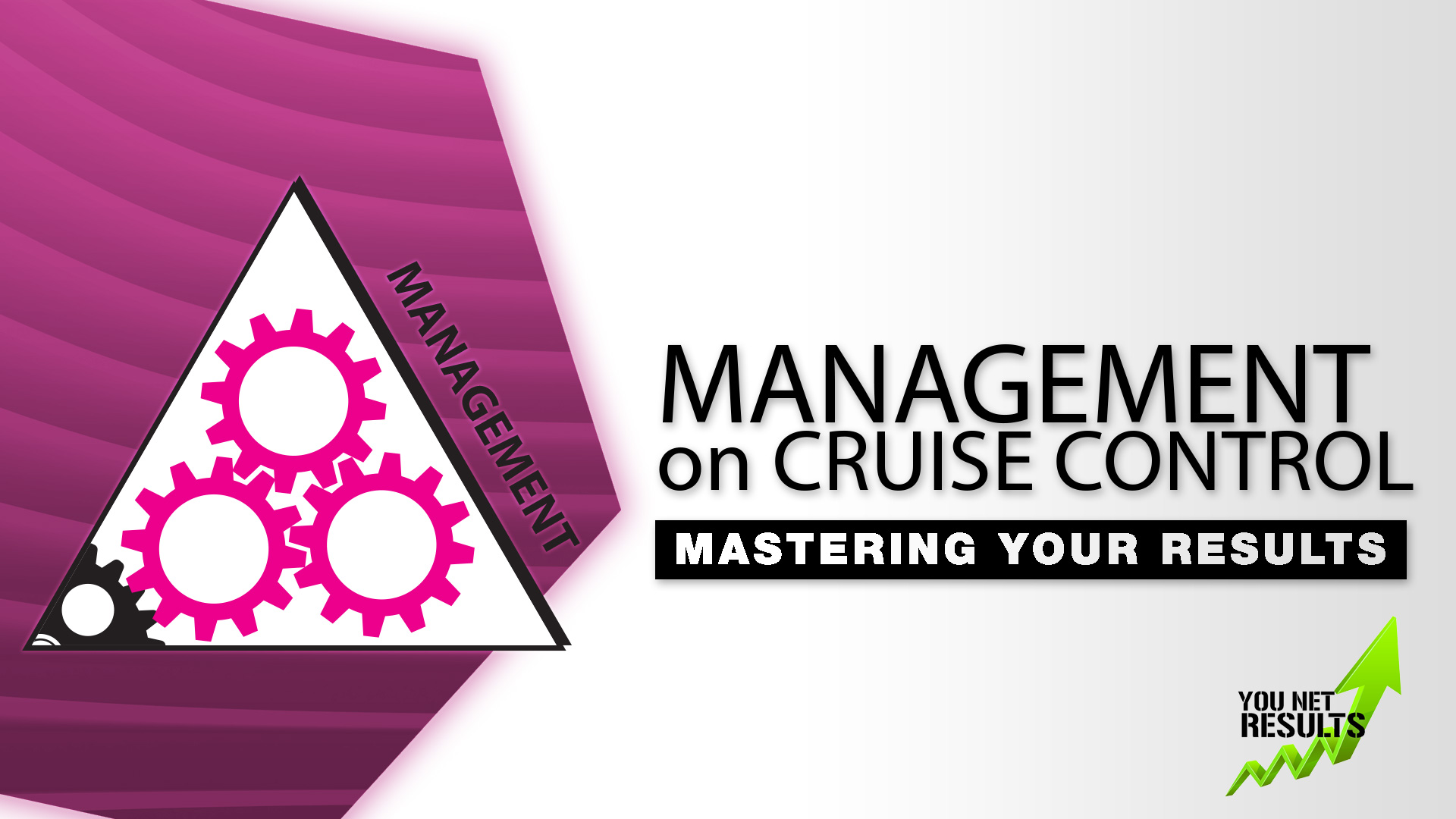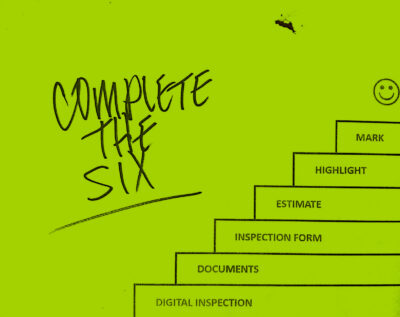



What do you find essential in the management of people?

 Sean Herzog’s Six Steps To Success – Complete The Six!
Sean Herzog’s Six Steps To Success – Complete The Six!

This is good stuff! In this Working On It Tuesday meeting, the owners in our group share “the best management advice I’ve ever received”!
 Photo by Tim Mossholder On Unsplash
Photo by Tim Mossholder On Unsplash
We will soon bid farewell to the old year and welcome the new. Now is the perfect time to reflect on your auto repair business and set some realistic auto repair New Years resolutions. At You Net Results, we understand the unique challenges auto repair shop owners face. Hence, in this blog, we’ll guide you through some key goals that can change your auto repair shop and set you on a path to long-term success. Let’s examine them.
One of the most crucial resolutions for an auto repair business is streamlining operations. This means optimizing your workflow, reducing unnecessary downtime, and ensuring that your team operates efficiently. Consider automating routine tasks, implementing a reliable software system, and providing regular training for your staff. Our Auto Service Advisor Training can help you achieve these goals, so your shop will be more efficient and profitable.
Your team is your greatest asset. In the auto repair industry, staying updated with the latest technologies and repair techniques is essential. Resolve to invest in training and development programs for your service advisors, technicians, and customer service staff.
You Net Results offers comprehensive training programs in order to improve your team’s knowledge and skills. That will enhance the customers’ experiences, guaranteed.
Customer satisfaction should always be a top priority. Make a resolution to go the extra mile in providing excellent customer service. Encourage your service advisors to communicate clearly with clients, explain repairs, and offer honest estimates. Happy customers not only return but also refer others to your shop. Our ARA (Auto Repair Advisor) program equips your team with the skills to exceed customer expectations.
Financial stability is key to the long-term success of your auto repair business. Set specific financial goals for the year, such as growing revenue, reducing expenses, or raising profit margins. Regularly monitor your financial performance, then make necessary adjustments. You Net Results offers financial coaching to help you navigate the financial aspect of your business successfully.
The auto repair industry is constantly evolving with new technologies and diagnostic tools. Staying up-to-date is essential for providing high-quality service. Resolve to embrace technology and invest in the latest equipment. You Net Results can help you select the right tools and technology in order to improve diagnostics and efficiency.
Effective marketing is important for attracting new customers and retaining existing ones. Make a resolution in order to create a marketing plan for your auto repair business. Utilize online marketing, social media, and email campaigns so you can reach your target audience. Our website has a dedicated blog on “Auto Service Advisor Marketing Strategies” that can provide more info.
In order to track your progress, establish a set of key performance indicators (KPIs) for your business. This can include metrics such as customer retention rates, average repair order value, and technician productivity. Regularly review these KPIs so you can use the data to make informed decisions and improvements.
The beginning of a new year is the perfect time to set goals for your auto repair business. By following all that we have mentioned in this blog, you can position your business for growth and success in 2024.
At You Net Results, we’re here to help you keep these resolutions. Our Auto Service Advisor Training and other programs empower both auto repair shop owners and their teams. Make 2024 a year of prosperity and excellence for your business by taking the first step toward improving. Contact You Net Results today, so we can help you get started. Book a complimentary consultation. Brian Gillis and our team will help you create the best marketing strategy for your business. Build trust, showcase expertise, and ensure repeat business. Let’s make 2024 the best year of your business life!

Photo by Kenny Eliason On Unsplash
The auto repair industry has seen big shifts over the past few decades. Technology evolves, as customers become more tech savvy. The online marketplace dominates. The strategies needed for marketing your auto repair shop have also had to adapt. How do you get the wheels turning to effectively market in this combative landscape?
At You Net Results, we have coached and guided auto repair shop owners just like you to success. This blog will shed light on some effective marketing strategies. These will work for your auto shop, so read on.
Before you jump in and try any marketing strategy, you first need to understand who your customers are. Are they millennials who are looking for quick fixes? Or are they families needing regular repairs? When you know who your target audience is, then you can create a message that speaks directly to them.
This is the digital era. For any business, having a robust online presence is no longer just optional. Marketing on the Internet always involves a two pronged strategy:
Promotions work great for attracting new customers. Loyalty programs, on the other hand, retain existing ones. Offer customers discounts for referrals. Setting up a points based system where your loyal customers can earn rewards is also a great idea.
Positive reviews on platforms like Google My Business, Yelp, and even your own website can really boost your credibility. Remind your satisfied customers to leave you a review online. Just make sure you always address negative feedback both promptly and professionally.
Knowledge is a powerful marketing tool, so why not invite your valued clients to in person workshops or online webinars via Zoom? Share your expertise about basic car maintenance, understanding car parts, and safe driving tips. This will position your auto shop as a thought leader in the industry. You can educate your audience, all the while also building trust with them.
Never, ever count out the timeless power of local ads! Posting billboards, recording local radio ads, or sponsoring a community event can reinforce your presence in your area. The act of growing goodwill in your community is never a bad thing!
Why not forge partnerships with businesses similar to yours? When you work together with car dealers, car washes, or even gas stations, the cross promotional opportunities can be huge. There is likely a local business owners group in your area you can join, if you don’t already have strong bonds with other owners.
Word of mouth is still one of the most potent forms of marketing going. You must give your current customers a reason to refer their family and friends. A simple discount or a free service can be tempting to anyone you offer it to.
The auto repair industry evolves, just like all others. Staying on top of trends, tools, and technology positions your shop as both innovative and up to date. Plus, adopting the latest techniques in your services can serve as a unique selling point.
Lastly, you should always track how effective your marketing strategies are. Use free tools such as Google Analytics to understand website traffic. Meta Insights gauge your shop’s social media engagement on Facebook and Instagram. When you carefully study that data, you can then tweak your strategies in order to get better results.
Marketing your auto repair shop effectively is not just about drawing in a crowd. It is also about building trust and displaying your skills. Most importantly, though, it means more repeat business for your shop. As the old the saying goes, it is not just about working hard. It is also about working smart. Effectively marketing your auto repair shop requires mixing both traditional and modern strategies. It is all about knowing your audience, while positioning your shop’s brand. Only then can you provide your customers a genuine value.
Have you ever found yourself at a fork in the road? Perhaps you were not sure how to market for your auto repair shop? Just remember that our expert help is just a click away. We are here to guide you every step of the way.
Contact You Net Results today, so we can help you start the process. Book a free consultation. Brian Gillis and his team will help you create the best marketing strategy for your auto repair business. When you build up trust and showcase your skills, you will ensure repeat calls. Let’s work together and make this the absolute best month of your business life!

This week, we covered Time Management. How can you manage your personal time, as well as your professional schedule in the shop?

As business coaches for auto repair shop owners, we have seen so many shops ignore one crucial aspect. That is measuring their processes. Precision helps shop owners find issues and reduce costs. The bottom line is that measuring systems improves your efficiency. This article stresses gauging your auto repair systems, so let’s dive in!
Running an auto repair shop comes with its own set of unique challenges. From handling customer expectations to making complex repairs, there is a lot on a shop owner’s plate. However, many shop owners do not know the power of gauging the steps they must take for each and every repair. You can gain many big insights into what you do when you do so. Then, you can make crucial data driven choices by tracking and studying your key metrics.
When you measure your auto repair systems, it will shine a light on shortfalls that cost your shop both time and money. Pinpoint the areas of improvement by tracking metrics such as cycle time and first-time fix rate. Do certain repair jobs always take longer than expected? That may show a need for either more training or a better workflow.
Cost control is a top priority for any business owner. This is true, regardless of what industry they happen to work in. Auto repair shops are no exception to this rule. When you measure out your automotive repair processes, it will help you to identify the ways you can save money. Analyze such metrics as your technician yield and your parts usage. Those could uncover many expenses you need to reduce, all without losing quality. This can then lead your shop to big time savings over the long haul.
Efficiency is a vital component to running a successful auto repair shop. Measuring each process will help you identify your holdups and simplify your day to day operations. By tracking the metrics related to workflow and resource usage, you can adjust them in order to optimize your efficiency. This will lead you to both faster turnaround times and increased customer satisfaction. Not to mention you will see higher profits!
When you install a measurement system for your auto repair processes, it will require both careful planning and precise execution. Follow the four steps below:
Start by clearly stating what your auto shop’s business goals are. What specific outcomes do you want to achieve in the future? Some examples could include reducing your cycle time by 20%, or perhaps increasing the first-time fix rate to 90%. Be sure that you define clear, specific goals so you can guide your measurement efforts.
Choose the metrics that will both align with your goals and provide the right insights. Consider critical metrics such as cycle time, first time fix rate, mechanic output, and customer happiness. Tailor each of the metrics to your shop’s unique needs and goals.
Establish a way in which you can both collect and analyze your chosen metrics’ data. You may need to use a niche software, but old fashioned manual tracking methods could work just as well. Ensure that the data collection process is accurate and consistent, as well as reliable.
Collecting data is only valuable if you take action based on it. Regularly review the data and note any problem areas you observe. Work with your team to write action plans and make the needed changes. This will help you address shortfalls and improve every aspect of your business.
There are so many perks that result from gauging your auto repair processes. Here are just a few of the rewards you can expect:
When you measure your repair actions, you can identify any of the bottlenecks that might hinder your workflow. Does a specific repair task take way too long? Do you have far too few resources in house? Then, you need to address these shortfalls for the highest efficiency.
Measure your auto repair methods in order to simplify tasks. This eliminates steps that are both needless and redundant. Optimizing workflow, resources, and communication helps your shop’s efficiency. This will reduce both errors and delays.
An efficient repair process creates a better customer experience. Exceed your customers’ trust and foster loyalty by reducing their repair times. Increasing first-time fix rates and offering the best service also help your reputation. Satisfied customers are more likely to both return and recommend your shop to others.
Measuring your auto repair processes can both reduce your costs and improve your efficiency. When you track key metrics, find problem areas, and make data driven changes, you can streamline tasks and provide a better customer service experience. Do not count out the impact measurement can have on your overall success.
Contact You Net Results today, so we can begin the process. Book your own free consultation. Brian Gillis and our team will help you to start your shop’s leadership foundation. Our vast network of auto repair shops all work together to build up the industry. Let’s make this month the best month of your whole business life!

Find out what AI sees as differences between Leadership and Managment.
1. Utilizing SOPs to run the day to day.
2. Having a checklist
3. Breaking down workflow / The Workflow Board.
4. Maximizing your point of sale system as a workflow tool.
5. Methods to stay organized and ensure efficiency
